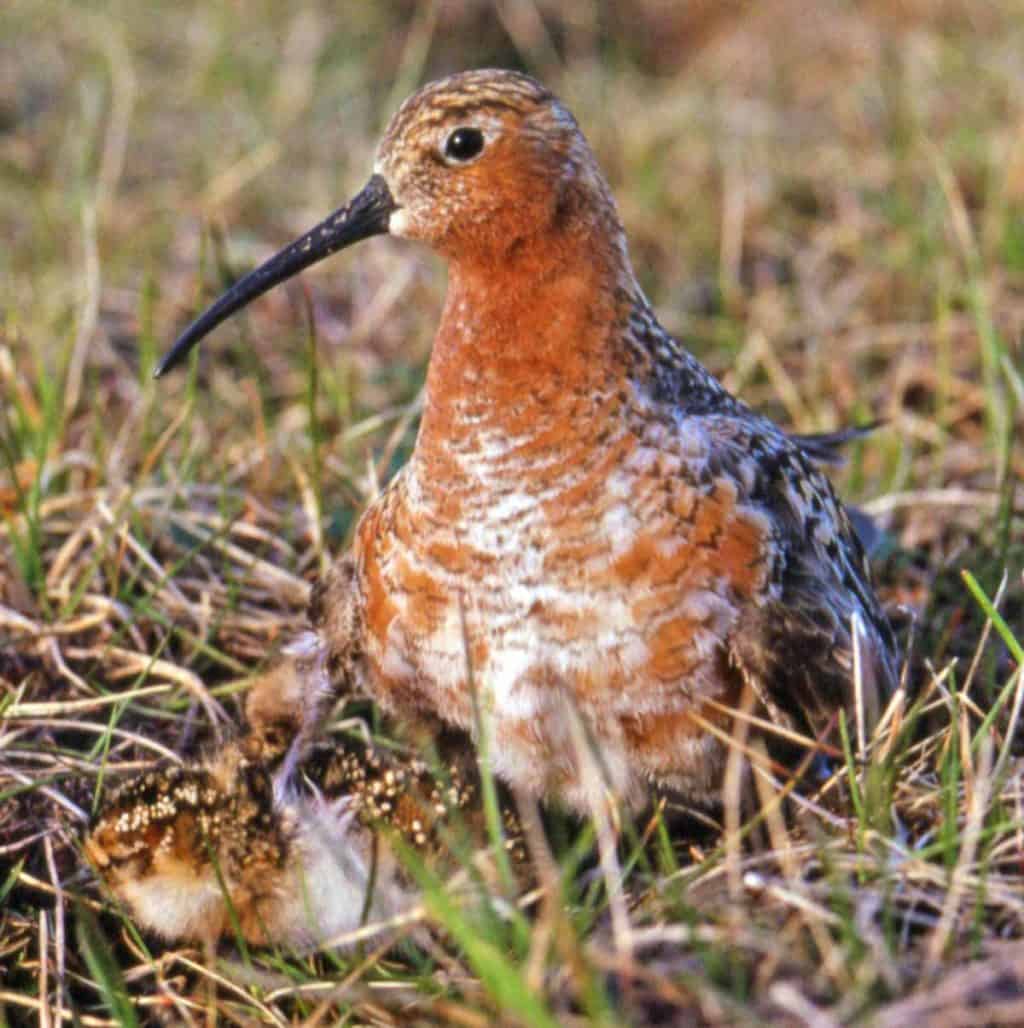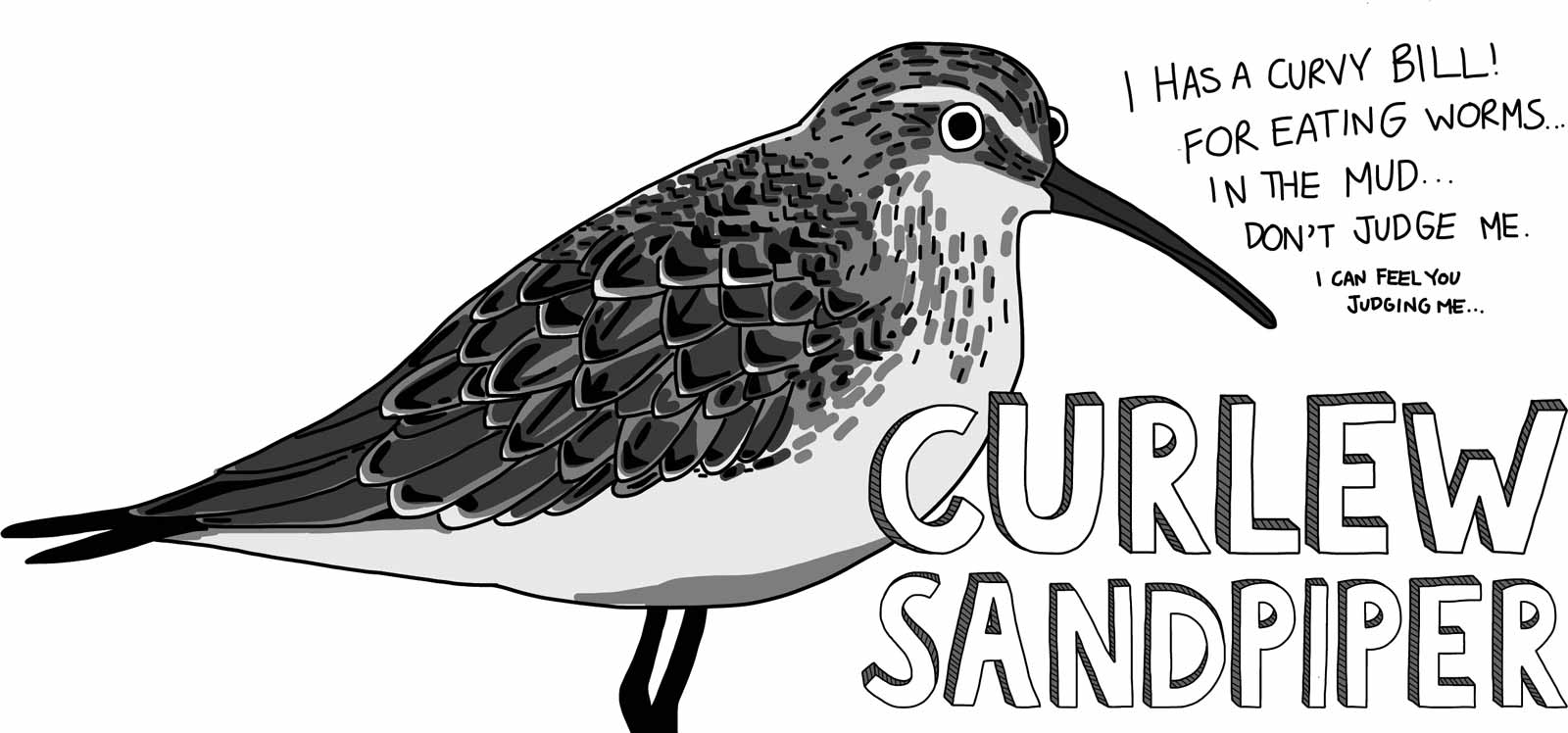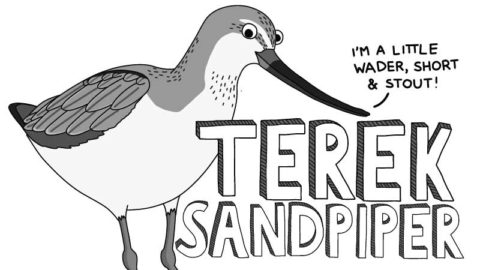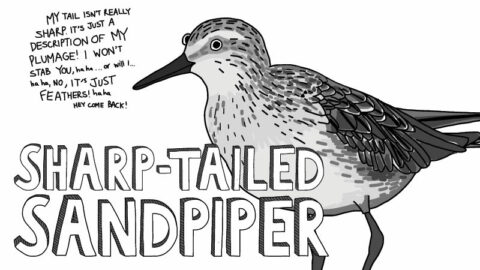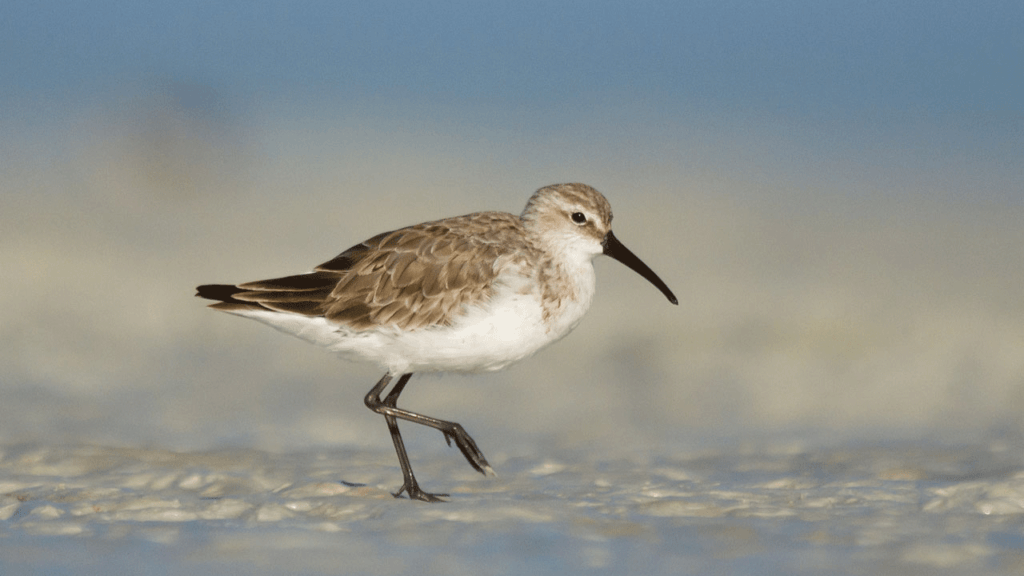
The Curlew Sandpiper (Calidris ferruginea) looks a bit like a Red-necked Stint that has had its bill and legs stretched. They have black legs and a black, down-curved bill adapted for pulling polychaete worms and other invertebrates from the mud.
In the non-breeding season, their plumage is a smooth grey-brown on their wings and back. Their breast is slightly speckled with white underparts. When breeding season comes around, the plumage on their head, chest and belly turns brick red.

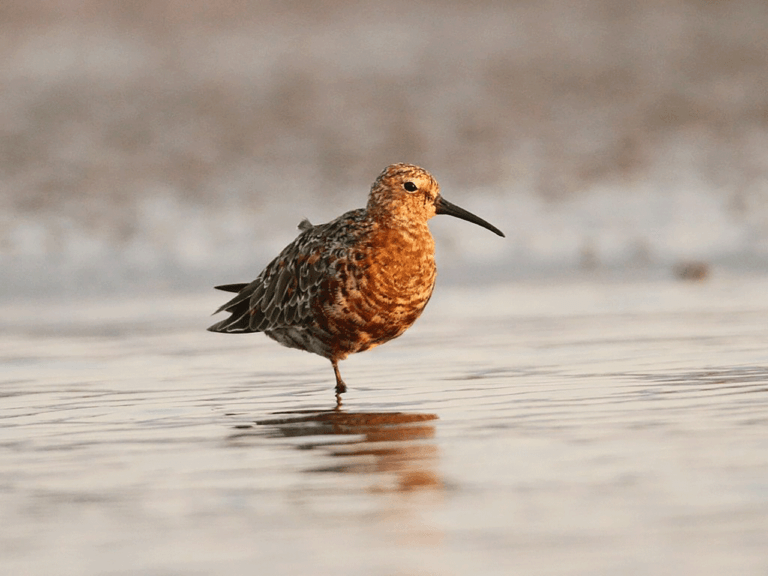
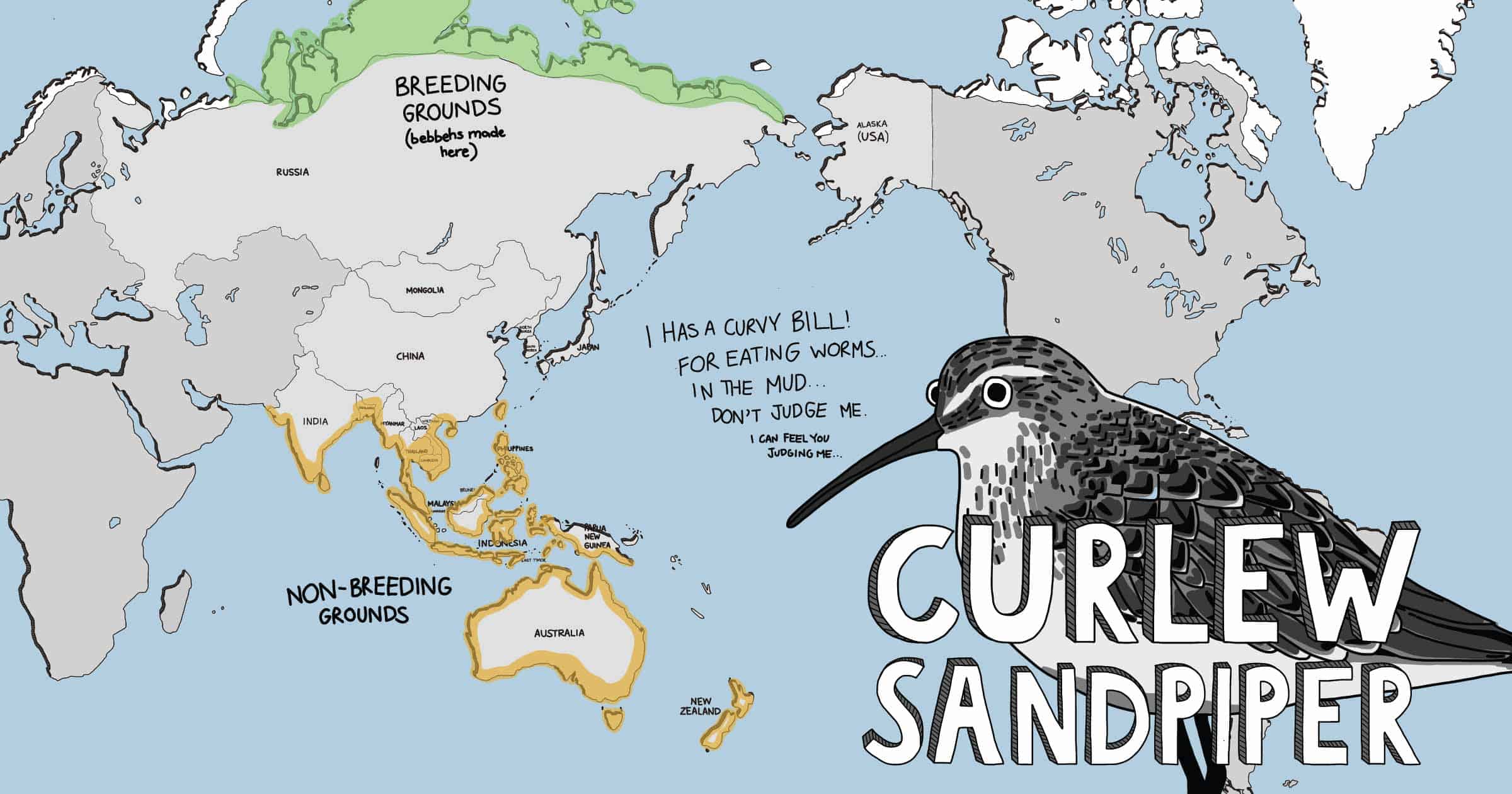
To find a Curlew Sandpiper in Australia, look around coastal environments during summer. It is most common in the south-east and north-west.
They are often seen foraging with Red-necked Stints and other waders. You can distinguish the Curlew Sandpiper from these other birds by their curved bill and characteristic “sewing-machine” feeding action.
